Police signals
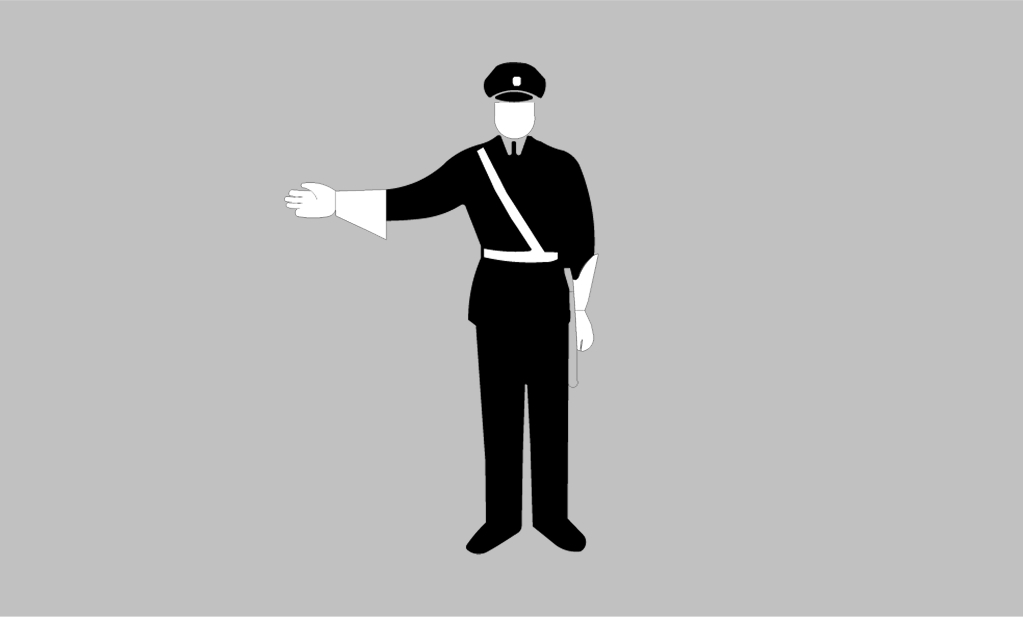
P1 Stop
This signal indicates a stop for road users approaching from the front or rear and is most often used at intersections. It applies as long as the police officer is facing you. For road users from the side, the signal means they may proceed since the way is clear. The police officer may also use a stop paddle to give this signal.
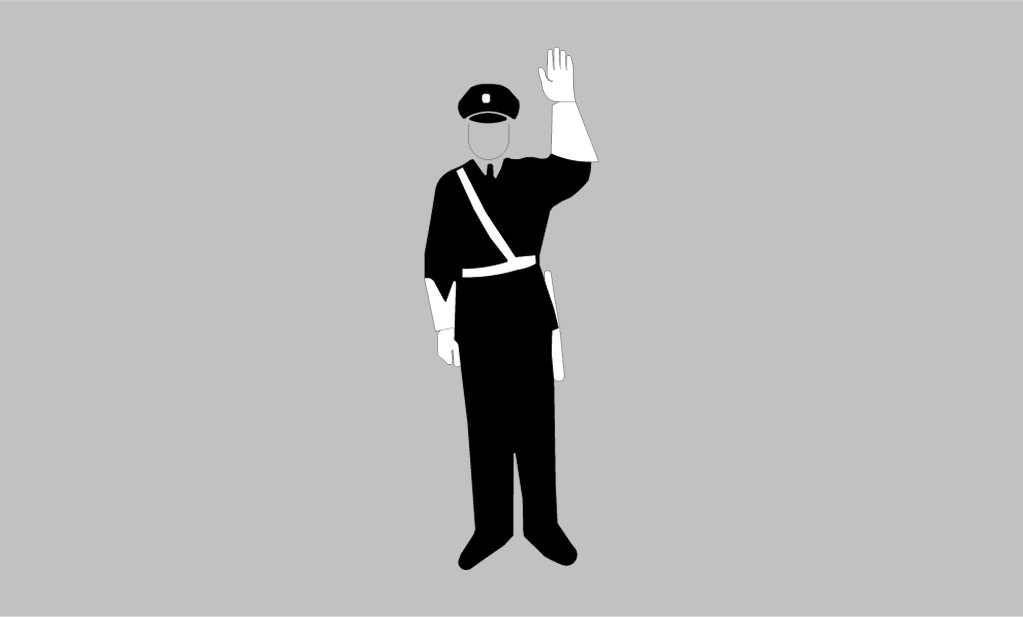
P2 Stop
A stop applies to the road user toward whom the police officer's palm is directed. The police officer may also use a stop paddle to give this signal.
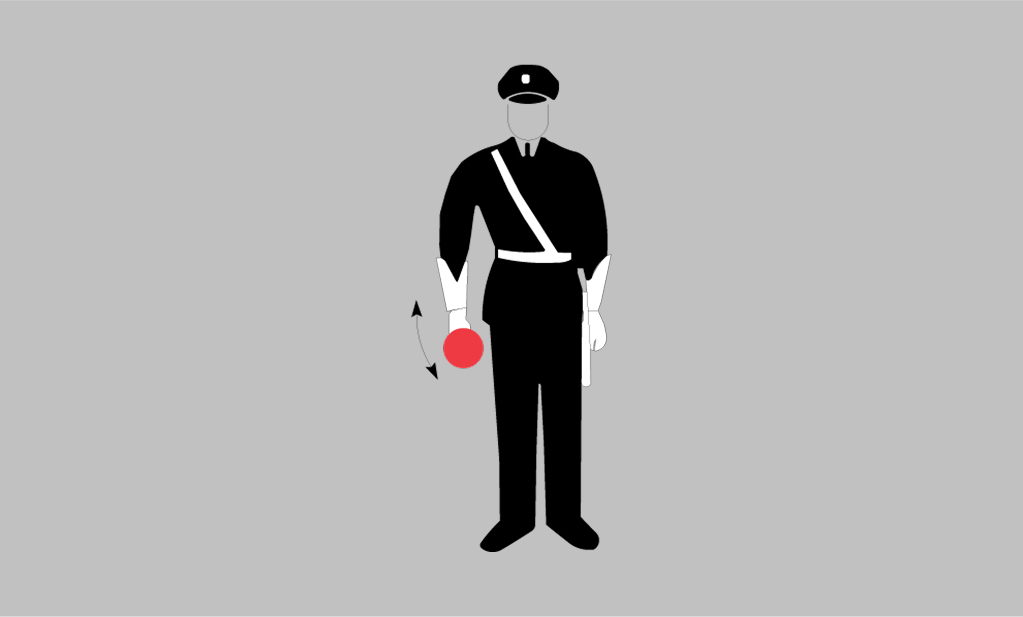
P3 Stop
A stop applies to the road user toward whom the police officer's flashlight is directed. This signal is primarily used during darkness or in poor visibility. The flashlight is held in a position where it is most easily visible to road users.
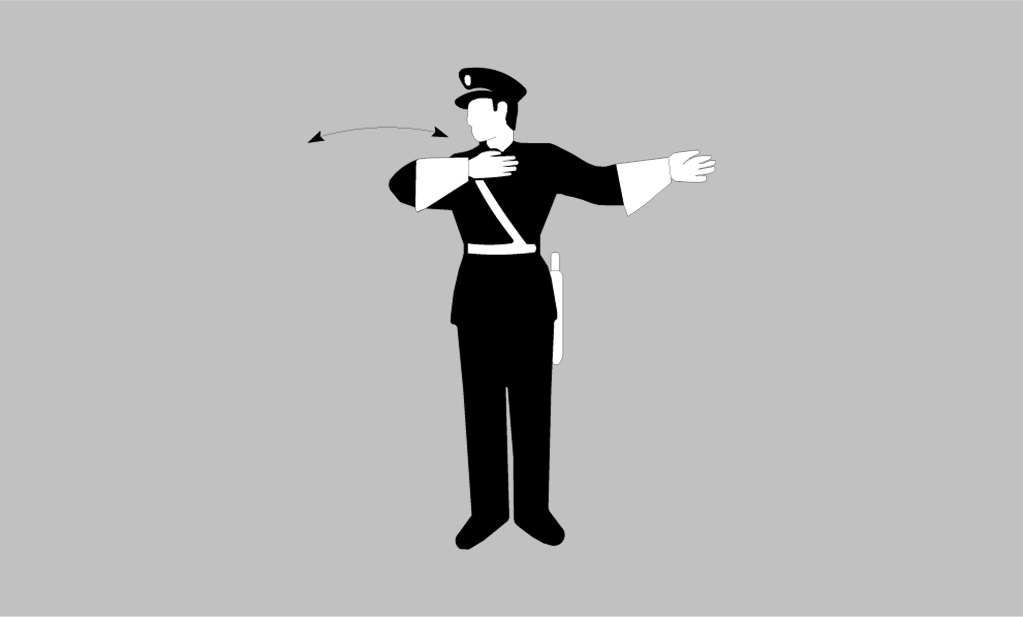
P4 Proceed driving forward
This signal indicates that road users in the direction the signal is given may continue driving. The signal is performed with a waving motion in the driving direction it applies to. Adjust your speed according to the situation.
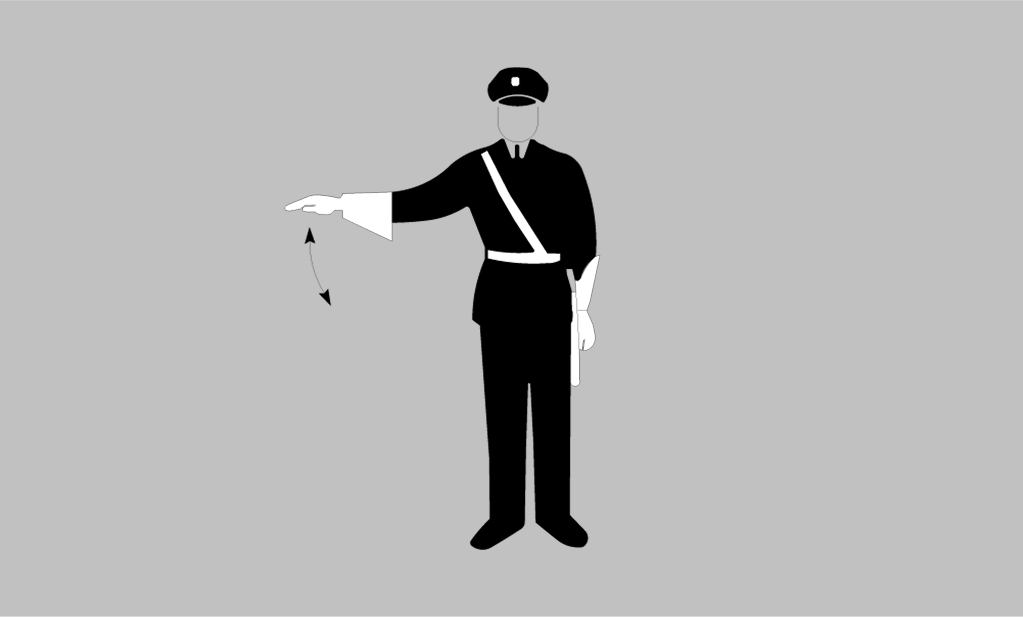
P5 Reduce speed
This signal indicates that the road user toward whom the police officer is facing shall reduce their speed. During darkness or poor visibility, the signal can be clarified with a flashlight showing white or yellow light or with a reflective device. Adjust your speed according to the situation.

P6 Checkpoint
The signal indicates that vehicle drivers should pull into a checkpoint for inspection. If a symbol for a specific type of vehicle is shown, the requirement applies only to drivers of those vehicles. The signal is adapted to the conditions of the location.
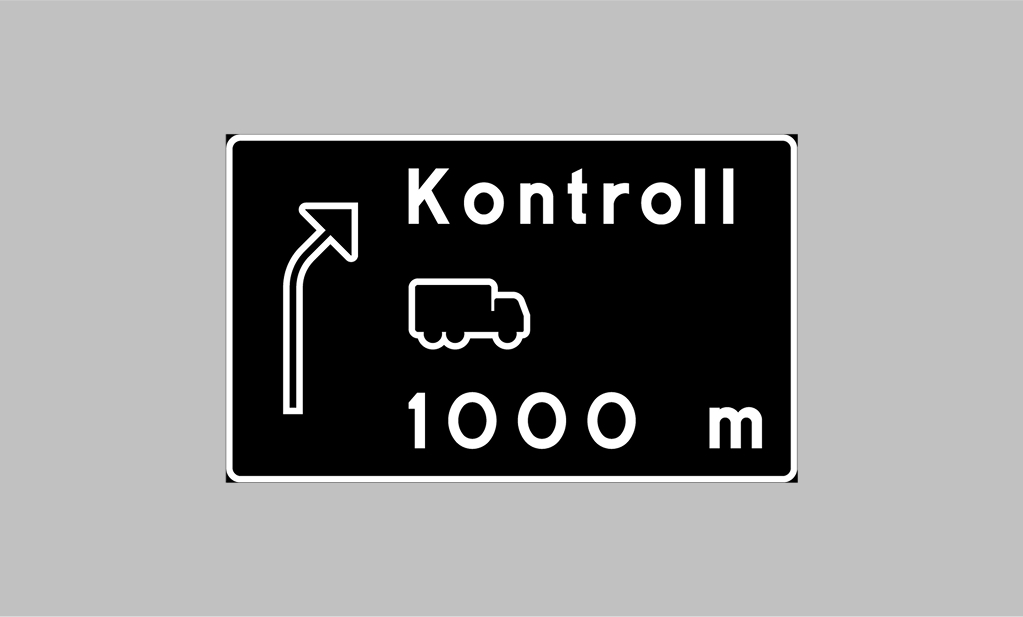
P7 Advance warning of checkpoint
This signal provides preparatory information about an upcoming checkpoint. Symbols and text are displayed together to clarify the nature of the checkpoint.
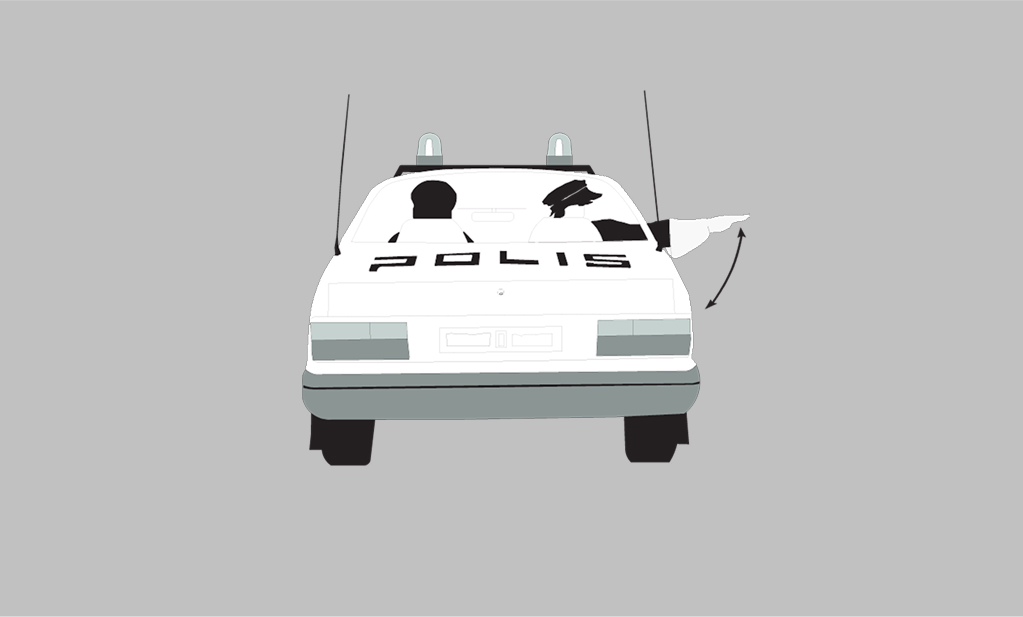
P8 Reduce speed
This signal means that road users behind the police vehicle shall reduce their speed. During darkness or poor visibility, the signal can be clarified with a flashlight showing white or yellow light or with a reflective device. Reduce your speed when you see this signal and maintain a safe distance.
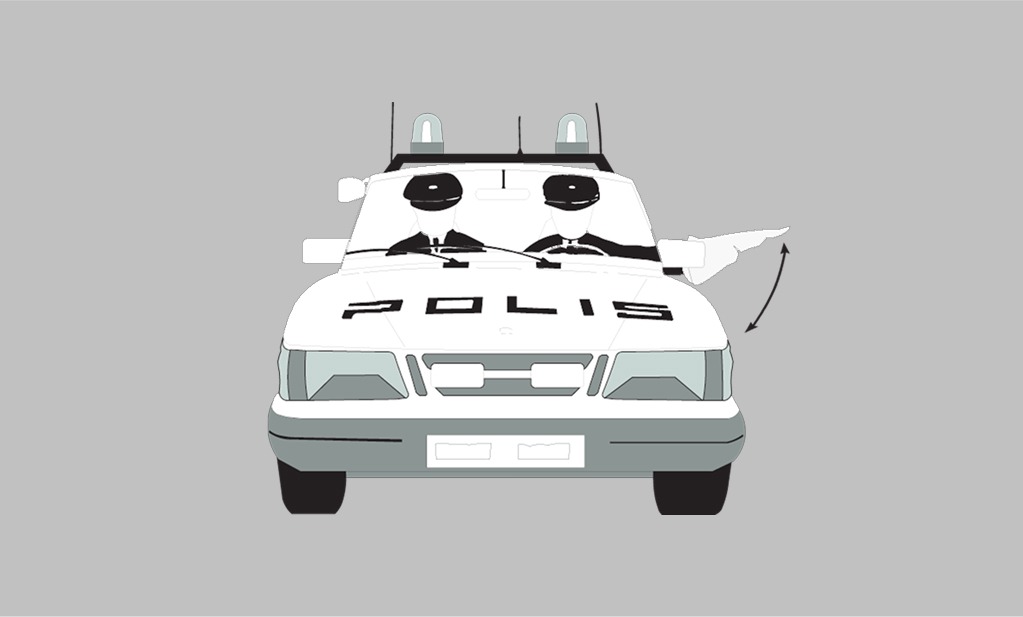
P9 Reduce speed
This signal means that road users behind the police vehicle shall lower their speed. During darkness or poor visibility, the signal can be clarified with a flashlight showing white or yellow light or with a reflector with flashing colors. Reduce your speed when you see this signal and maintain a safe distance.
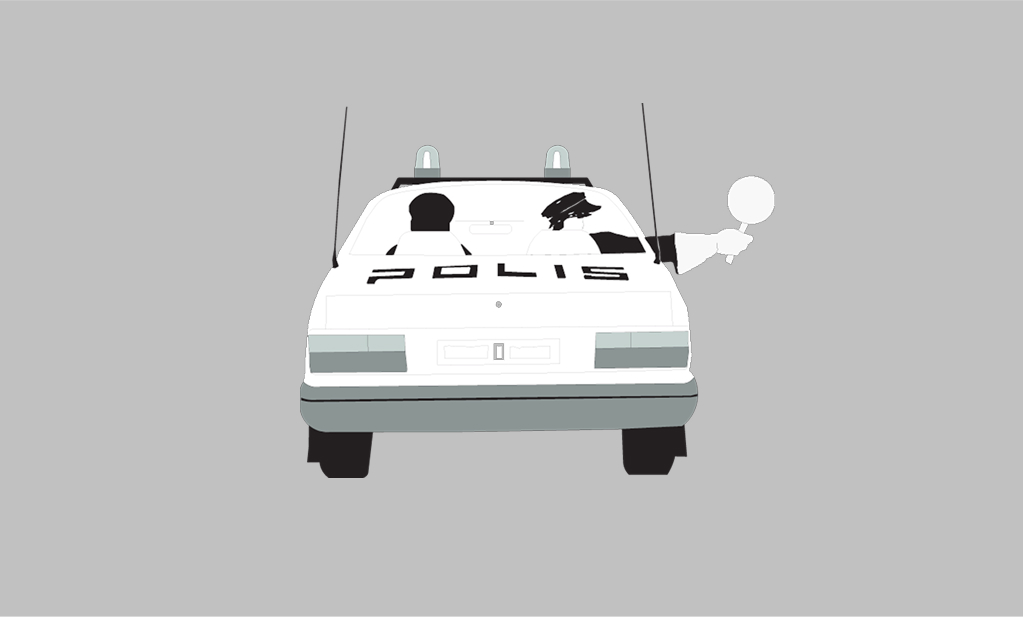
P10 Follow and stop behind the police vehicle when it stops
This signal indicates that the driver behind the police vehicle should follow it and stop when the police vehicle stops. The signal may also be given with a stop paddle.
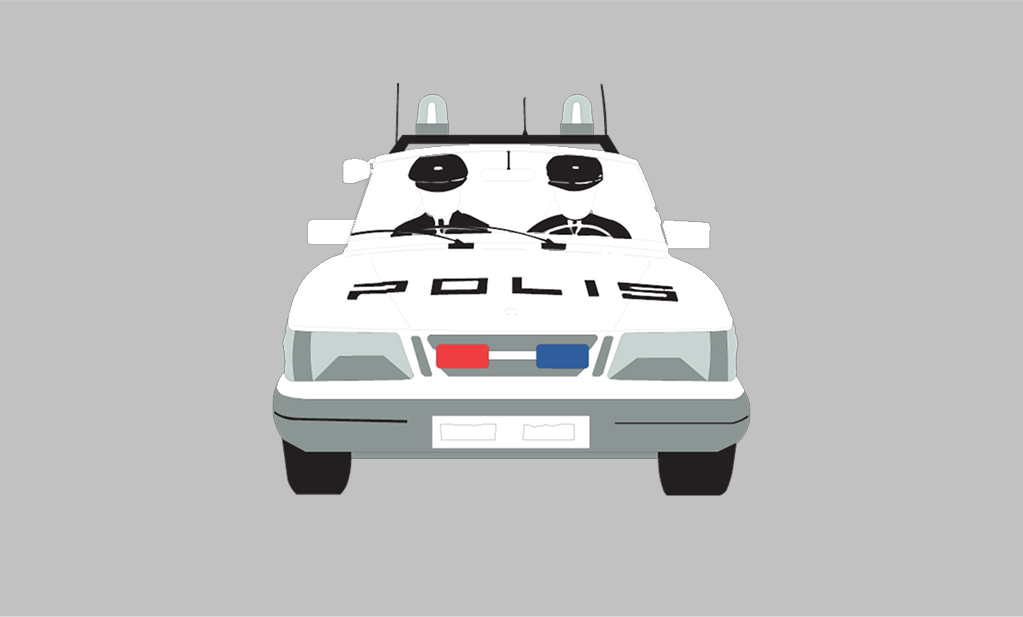
P11 Pull over to the side and stop in front of the police vehicle
This signal indicates that the driver in front of the police vehicle should pull over to the side and stop. The signal is given with alternating flashing blue and red lights. Stay calm and stop in a safe place at the roadside as directed by the police.